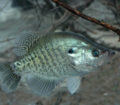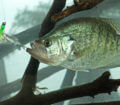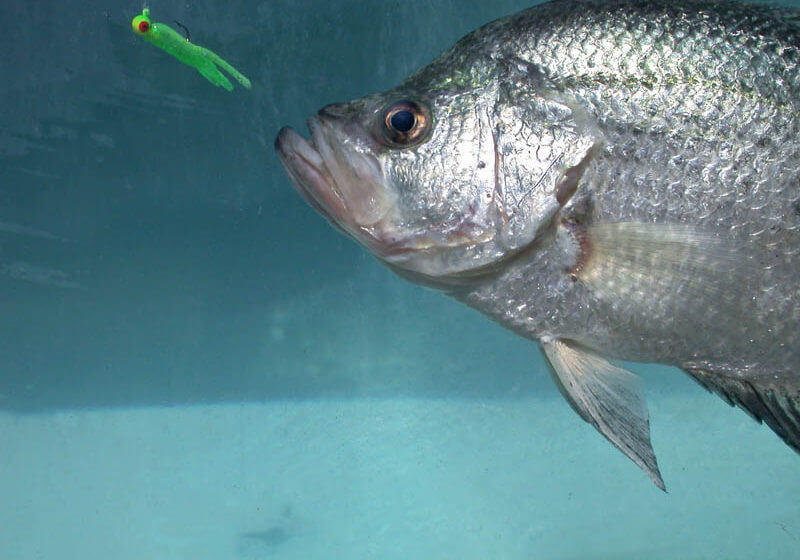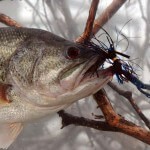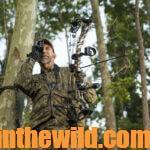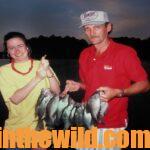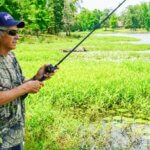Editor’s Note: The anglers you’re most likely to see on any lake during April and May are bass fishermen and crappie fishermen. So, I wanted to learn how to catch crappie when a lake was rising, and the temperature dropping. The next morning I fished with Chris Duraji. Chris lives in Lebanon, Tennessee, and he’s been fishing for 42 years.
 Although Chris Duraji lives in Lebanon, Tennessee, he grew up fishing for crappie with his granddad and dad in Mississippi. “We fished Lake Lee, Lake Grenada, Sardis Lake, Ross Barnett and all the fine oxbow lakes for which Mississippi is so famous. If there ever have been great lakes for crappie fishing, those north Mississippi lakes are some of the best. The water is almost always stained, and deep water only may be 12-feet deep. They all have plenty of manmade brush piles in them. Over the years, those north Mississippi lakes have proven that they hold plenty of very-big crappie.”
Although Chris Duraji lives in Lebanon, Tennessee, he grew up fishing for crappie with his granddad and dad in Mississippi. “We fished Lake Lee, Lake Grenada, Sardis Lake, Ross Barnett and all the fine oxbow lakes for which Mississippi is so famous. If there ever have been great lakes for crappie fishing, those north Mississippi lakes are some of the best. The water is almost always stained, and deep water only may be 12-feet deep. They all have plenty of manmade brush piles in them. Over the years, those north Mississippi lakes have proven that they hold plenty of very-big crappie.”
I knew that making the change from Mississippi crappie fishing to clear-lake crappie fishing in Tennessee had to be about as hard as changing from day shift to night shift. I wanted to know how Duraji made the switch. “John, once I started fishing deep, clear lakes for crappie, the biggest thing I had to learn was to downsize all my equipment and lures. I also learned to rely on my electronics more on clear lakes to find crappie than I did when I was fishing those stained lakes in Mississippi. When I spotted crappie on my depth finder in Tennessee, I noticed that the fish were holding in much-deeper water than the Mississippi crappie did. In the Mississippi lakes, I mainly caught crappie around the structure I could see. But on the Tennessee lakes, I mainly catch crappie around structure I can’t see. I use a Humminbird side-scanning depth finder (http://www.humminbird.com/Category/Technology/Side-Imaging/) to locate structure and crappie on deep, clear lakes.
“The deepest I ever caught crappie was somewhat more than 50-feet deep when I was fishing on Dale Hollow in December one year. The crappie bite there seems to really turn on in the middle of December. Generally, I can catch big crappie as fast as I can get my jig down to that 50-foot water depth. On Dale Hollow, I’ll use about a 1/16-ounce jig, and I count it down. When I count to 50, I stop the jig and hold it extremely still. If I don’t get a bite, I’ll drop the jig another 3 feet and hold it still. If I don’t get a bite there, I’ll drop it another 3 feet. This way, I can tell the depth where the crappie are holding. When I catch a crappie, I remember the depth where the crappie have been holding. From then on, I’ll count my jig down until I reach that depth. I have to find those crappie using my jig instead of my depth finder, because the crappie are holding so close to the drop-off, the depth finder can’t separate them out. I’ll bounce my jig off the bottom until it comes to the lip of the break. Then I’ll let the jig fall off the ledge to drop vertically right up against the wall of the drop-off. If crappie are on top to that ledge, I can pinpoint them with the depth finder. I’m sure anyone who has found this ledge hasn’t seen any crappie there before and hasn’t fished for them.”
 When I asked Duraji, “What’s an average day of crappie fishing on Center Hill for you?” He explained, “On a good day, I can catch 50 or 60 crappie, but I only keep 8-12 of the biggest ones. On a bad day, I may only catch 6 or 8.”
When I asked Duraji, “What’s an average day of crappie fishing on Center Hill for you?” He explained, “On a good day, I can catch 50 or 60 crappie, but I only keep 8-12 of the biggest ones. On a bad day, I may only catch 6 or 8.”
I learned another secret about catching big crappie on deep, clear lakes like Center Hill and Dale Hollow from Duraji, who says, “I always tip my jigs with Berkley’s PowerBait Crappie Nibbles (http://www.berkley-fishing.com/berkley-bait-dough-berkley-powerbait/powerbait-crappie-nibbles/1285453.html). I totally believe in the effectiveness of Crappie Nibbles. When I could see the crappie holding in 15-20 foot deep water, I’d cast to them and swim the jig by them, and the crappie wouldn’t bite. But when I used that same jig and tipped it with a Berkley’s Crappie Nibbles, I watched the crappie take my jig. That made a believer of me. So, I have no doubt in my mind that fishing with Crappie Nibbles gets me more bites than fishing without Crappie Nibbles. There are a lot of different colors of Crappie Nibbles, but I’ve been the most-successful with the white ones.” On Center Hill, Duraji prefers white, chartreuse, pink and pearl blue jigs, or a blue body with a chartreuse tail.
To learn more about crappie fishing on Tennessee lakes, call Chris Duraji at 615- 519-5904, or email him at fishingrx@aol.com.
Video:
“Why I Use Crappie Nibbles to Catch More Crappie” with Chris Duraji – https://youtu.be/_-rAVFJ4H-A
To learn much more about crappie fishing, get John E. Phillips’ Kindle eBooks, and print and Audible books by going to https://johninthewild.com/books/#crappie or to www.barnesandnoble.com. To receive and download for free “The Crappie Catchers’ Cookbook,” by John and Denise Phillips, go to https://johninthewild.com/free-books

